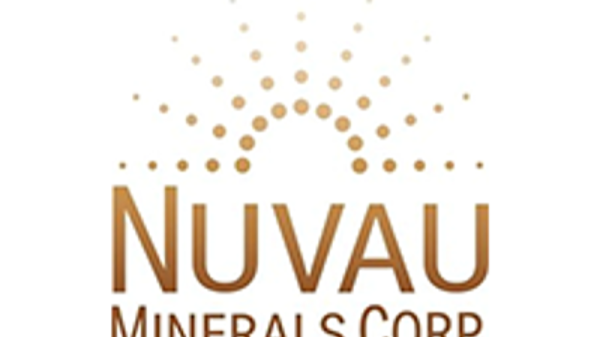Navigating Investments in Retirement
Carefully Calculate Your Retirement Needs
The first step in preparing for retirement is to calculate how much money you will need in order to live comfortably during your golden years. This includes not only basic living expenses such as housing, food, and transportation but also healthcare costs. As you age, the cost of healthcare tends to increase significantly, so it’s important to factor these costs into your retirement plan.
Considering the Impact of Inflation – Start Saving Early
One of the most important things you can do to prepare for retirement is to start saving early. The earlier you start saving and investing, the more time your money has to grow through compound interest. Even small contributions made over a long period of time can add up significantly by the time you retire.
Inflation can erode the purchasing power of retirement savings over time. Senior citizens should consider investments that have the potential to outpace inflation to protect their wealth. While stocks historically offer better protection against inflation than bonds, it’s important to strike a balance between growth and risk tolerance. A diversified portfolio that includes assets with the potential for inflation-beating returns, such as stocks or real estate, can help seniors preserve their purchasing power in retirement.
Consider Contributing To An IRA or Other Retirement Plans During Your Working Years
If you are employed, one of the best ways to save for retirement is through an employer-sponsored 401(k) or other similar plans. These plans allow employees to contribute pre-tax dollars towards their retirement savings, which can help reduce their taxable income each year.
Determine Your Target Date For Retirement
Another important aspect of preparing for retirement is determining when you want to retire and planning accordingly. This planning involves setting a target date for retiring and then working backward to determine how much money you will need to live comfortably throughout your golden years.
Flexibility and Liquidity
Senior citizens should maintain flexibility and liquidity in their investment portfolios. Unexpected expenses or changes in circumstances may require access to funds. While long-term investments like stocks and real estate can provide growth potential, retirees should maintain a portion of their portfolio in more liquid and accessible assets, such as cash or short-term bonds, to meet immediate financial needs without relying on selling long-term investments at unfavorable times.
Keep Track Of Your Annual Tax Rate And Tax Bracket
Keeping track of your annual tax rate and tax bracket are critical to making a good plan for your retirement needs. This plan involves understanding how taxes will impact your retirement income and making sure that you have enough money saved to cover these costs.
Senior citizens should also be mindful of tax implications when investing. Certain investments, such as tax-efficient mutual funds or tax-exempt bonds, can help minimize tax liabilities. Additionally, retirees should explore tax-advantaged retirement accounts, such as Individual Retirement Accounts (IRAs) or 401(k) plans, to maximize tax benefits. Consider consulting with a tax advisor or financial professional to understand the tax implications of different investment strategies and make informed decisions.
The Importance of Diversification
Diversification is a critical principle in investment strategy. By spreading investments across different asset classes and sectors, seniors can mitigate risk and avoid overexposure to any single investment. A well-diversified portfolio may include a mix of stocks, bonds, mutual funds, and other assets. Diversification can help cushion the impact of market downturns and provide a more stable return over time.
Have Regular Portfolio Reviews
Seniors should regularly review their investment portfolios to ensure they remain aligned with their financial goals and risk tolerance. As retirement progresses, adjust the portfolio mix to reflect changing needs. Regular portfolio reviews can help identify underperforming investments, rebalance asset allocation, and make informed decisions regarding buying or selling investments.
Seek Professional Guidance
While it is possible to manage investments independently, seeking professional guidance can be beneficial, especially for seniors who may not have the time or expertise to monitor investments closely. Financial advisors can provide personalized investment advice based on individual circumstances, goals, and risk tolerance. They can also help seniors navigate complex investment products and ensure their portfolios are tailored to their specific needs.
Understand Your Retirement Account Options
Retirement accounts are an excellent way for senior citizens to save money and grow their wealth. They offer tax advantages that can help you maximize your savings over time.
Tax-Advantaged Retirement Accounts
Retirement accounts provide tax advantages that can help you save more money in the long run. Traditional IRAs allow contributions to be tax-deductible, meaning that you won’t have to pay taxes on the money until you withdraw it in retirement. On the other hand, Roth IRAs are funded with after-tax dollars, but withdrawals in retirement are tax-free. Roth IRAs are an excellent option if you expect your retirement tax rate to be higher than it is now.
SIMPLE IRA for Small Businesses
If you own or work for a small business, a SIMPLE IRA may be a low-cost option for saving money for retirement. This plan allows employers and employees to contribute pre-tax dollars into individual accounts. It’s easy to set up and maintain, making it an ideal choice for small businesses.
Taxable Investment Accounts
While taxable investment accounts aren’t technically considered “retirement” accounts, they offer flexibility that traditional retirement accounts don’t provide. You can withdraw funds at any time without penalty and use them as you like. However, these accounts are subject to capital gains taxes when investments are sold at a profit.
Withdrawal Rules
Understand the rules around withdrawing money from your retirement account early. There may be penalties associated with early withdrawal, depending on the type of account you have opened. For traditional IRAs and SIMPLE IRAs, if you withdraw funds before age 59 1/2, there will typically be a 10 percent penalty plus income taxes due on the amount withdrawn.
Roth IRA contributions can usually be withdrawn at any time without penalty or taxes owed since contributions were made with after-tax dollars. However, earnings on those contributions may also be subject to a penalty if withdrawn before age 59 1/2.
Contribution Limits
Contribution limits exist for each type of retirement account. For traditional and Roth IRAs, the maximum annual contribution limit is $6,000 (or $7,000 if you’re over 50). SIMPLE IRA contribution limits are higher at $13,500 (or $16,500 if you’re over 50).
You can open an IRA at most financial institutions, such as banks or brokerage firms. Shop around and compare fees and investment options before opening an account.
Why and Where Should Seniors Invest Their Money?
As retirement approaches, seniors need to start thinking about how to grow and protect their wealth. Investing is a great way to do both. It’s critical to choose the right place to put your money.
Investing for Growth and Protection
Seniors should invest their money for two main reasons–growth and protection. By investing in assets likely to appreciate over time, seniors can grow their wealth and ensure they have enough money to last through retirement. At the same time, investing in assets that are less risky than stocks can help protect seniors’ wealth from inflation.
Choosing Low-Risk Options
Low-risk options are usually best for senior citizens. Bonds, CDs, and annuities are excellent choices because they offer a predictable return on investment without exposing investors to too much risk. These investments are also typically backed by the government or other large institutions, making them more secure than other investments.
Online Investment Platforms
In recent years, online investment platforms have become popular for seniors to invest their money. These platforms offer a wide range of investment options at low fees, making them an attractive option for those who want to manage their investments but don’t want to pay high fees for professional advice.
Consulting with a Financial Advisor
While online investment platforms can be valuable tools for managing your investments, consulting with a financial advisor before making any major decisions about your retirement savings is a good idea. A financial advisor can help you determine the best place to invest your money based on your needs and goals.
Adopt Lower-Risk Investment Strategies for Stability
Managing retirement investments can be a tricky balancing act between risk and reward. While higher-risk investments may offer the potential for greater returns, they also come with a higher chance of losses. Adopting lower-risk investment strategies is critical for senior citizens looking to protect their wealth while still growing it. Here are some advice to consider when navigating retirement investments:
Trusts as a Tool for Managing Risk
Using trusts is one way to manage risk in retirement investments. Trusts allow investors to transfer assets into a legal entity managed by a trustee on behalf of beneficiaries. This legal entity can provide more control over how assets are distributed and protected from creditors or other potential risks. By including lower-risk investments within the trust, seniors can help ensure their wealth is protected while allowing for growth.
Bonds as Lower-Risk Investments
Bonds are another popular choice for those seeking lower-risk investment options. Bonds are loans made to companies or governments, with interest paid out regularly until the bond matures and the principal repaid. While bond yields may be lower than other types of investments, they also tend to be less volatile and offer more stability during market downturns.
While lower-risk investments may not offer the same potential for high returns as riskier options like stocks, they can help protect against declines in the market. Even with lower-risk strategies, some level of risk is involved with investing. Seniors should work closely with a financial advisor to determine an appropriate level of risk based on their individual needs and goals.
Diversify Your Portfolio Mix for Balanced Risk and Reward
Diversification is key. By diversifying your investment portfolio, you can reduce risk and increase reward. However, before selecting an asset mix, determine your risk tolerance. Asset allocation is the key to balancing risk and reward in your portfolio. A well-diversified portfolio should include a combination of different asset classes, such as stocks, high-yield bonds, and dividend-paying stocks. The right balance of these assets will depend on your individual goals and risk tolerance.
Stocks are a popular choice for investors looking for growth potential. However, they also come with higher risks than other types of investments. High yield bonds offer a higher return than traditional bonds but come with increased credit risk. Dividend-paying stocks provide regular income but may not offer as much growth potential as other stocks.
A balanced portfolio can help you compound wealth over time while providing steady distribution. Periodically review your asset allocation and make changes as needed based on market changes or your personal financial situation. For example, suppose you’re nearing retirement age and have a lower risk tolerance. In that case, you may want to shift more of your investments into fixed-income securities such as bonds or cash equivalents that offer less volatility than stocks. On the other hand, if you have a longer time horizon until retirement and are willing to take on more risk for potentially higher returns, you may want to consider allocating more funds toward equities.
Protect Income from Market Volatility with CDs and Money Market Funds
Low-risk investment options, such as CDs and money market funds, are excellent ways to protect income from market volatility. These investment vehicles offer a fixed rate of return that is not tied to the ups and downs of the stock market, making them ideal for senior citizens who rely on their investments for income.
Money market accounts are an excellent option for cash reserves because they offer higher interest rates than traditional savings accounts. They are also FDIC-insured, meaning that your money is protected up to $250,000 per depositor per insured bank. Money market funds invest in short-term debt securities, such as government bonds, that provide stability and liquidity while still earning a competitive yield.
While CDs and money market funds can provide reliable returns, they may not offer significant growth potential compared to other investment options. Bond funds invest in a diversified portfolio of bonds with varying maturities and credit ratings, potentially generating higher returns than CDs or money markets over time. Index funds track the performance of a particular market index like the S&P 500, offering exposure to a broad range of stocks without requiring active management.
Traded funds (ETFs) are similar to mutual funds but trade like stocks on an exchange throughout the day. ETFs can provide instant diversification across different sectors or asset classes while being low-cost and tax-efficient. However, all investments carry some risk, so consulting with a financial advisor is essential before making any decisions.
Life insurance policies can be another way to protect wealth in retirement by providing tax-free death benefits or living benefits that can be used during your lifetime. Treasury bills (T-bills) are also considered safe investments because the US government backs them.
Monitor Your Spending and Withdrawals for Sustainable Income
One of the biggest challenges that retirees face is ensuring they have enough money to last throughout their retirement. To ensure sustainable retirement income, monitor your spending and withdrawals carefully.
Make Spending Adjustments to Align with Your Monthly Income and Essential Expenses
As a retiree, you must be mindful of your expenses and adjust your spending habits accordingly. You should keep track of your monthly income, including any pension or social security payments you receive and any other sources of income. Once you have a clear understanding of your monthly income, you can start to make adjustments to align your spending with your essential expenses.
Consider Diversifying Your Income Sources
Having multiple sources of income can help create a steady stream of cash flow in retirement. For example, you might consider investing some of your savings in dividend-paying stocks or bonds that offer regular interest payments. Alternatively, you could look into rental properties or other real estate investments that generate rental income.
Track Your Checking Account, Yield Savings Account, and Taxable Income
To maintain purchasing power over time, keep track of your checking account balance, yield savings account balance, and taxable income. Doing so lets you make informed decisions about how much money you can afford to spend each month without depleting your savings too quickly.
In addition to monitoring these accounts regularly, consider the impact of inflation on your purchasing power over time. As prices rise over time due to inflationary pressures in the economy (e.g., higher costs for goods and services), the value of each dollar decreases. Therefore, if you don’t take steps to protect against inflation by investing in assets that appreciate at a rate higher than inflation (e.g., stocks), then the purchasing power of your savings will decline over time.
Tips for Successful Retirement Investing
Setting Clear Retirement Goals
Setting clear goals is one of the most important steps in successful retirement investing. Without a clear understanding of what you want to achieve in your retirement, making informed investment decisions that align with your long-term plans can be challenging. Start by considering factors such as your desired lifestyle, expected expenses, and any legacy you hope to leave behind. Once you have a clear picture of what you want to achieve, develop an investment strategy that will help you reach those goals.
Maximizing Retirement Savings
Another key aspect of successful retirement investing is maximizing your savings through tax-advantaged accounts. IRAs and 401(k)s offer significant tax benefits that can help grow your wealth faster than traditional savings accounts or taxable investments. By contributing as much as possible to these types of accounts each year, you can take advantage of compounding interest and reduce the amount of taxes owed on your earnings. Many employers offer matching contributions for employee 401(k) contributions, which can further boost your savings potential.
Diversifying Your Portfolio
While maximizing savings is important, it’s equally crucial to diversify your portfolio to reduce risk and increase potential returns. Diversification means spreading investments across different asset classes such as stocks, bonds, and real estate rather than focusing all funds into one area. Diversification helps protect against market volatility by ensuring that losses in one area are offset by gains in another. It’s also key to periodically review and rebalance portfolios over time to ensure they remain aligned with long-term goals.
Seeking Professional Advice
Seeking professional advice from a financial advisor can be invaluable when it comes to navigating retirement investments. A qualified advisor can provide personalized guidance on how best to allocate funds based on individual needs and goals while considering factors such as risk tolerance and time horizon. A financial advisor can also help monitor progress over time and make adjustments to ensure continued success.
Don’t Let Emotions Take Over
Retirement investing can be daunting, especially when you start to think about all the money you’ve saved over the years. Feeling emotional about your investments is natural, but it’s important not to let those emotions drive your decisions. Instead, stick to a professional plan to help you grow and protect your wealth.
A trusted person or financial advisor, like Edward Jones, can help keep you on track. A financial advisor can provide guidance and support throughout the retirement investment process. A financial advisor can also help you create a personalized investment plan that aligns with your goals and risk tolerance.
Handing over control of your investments can be a smart way to avoid emotional decisions. When we invest our own money, we may become emotionally attached to certain stocks or funds. This attachment can lead us to make irrational decisions based on our emotions rather than sound financial advice.
Handing over control of your investments to an expert like Edward Jones enables you to take advantage of their knowledge and expertise without letting emotions cloud your judgment. You’ll have peace of mind knowing that your investments are being managed by someone with experience navigating the ups and downs of the market.
Retirement can be an exciting time of life, but it can also bring financial challenges. As a senior citizen, you want to ensure that your wealth is protected and continues to grow throughout your retirement years.
You can achieve a secure financial future by incorporating these strategies into your retirement plan. Remember to consult with a financial advisor if you have any questions or concerns about navigating investments in retirement.
This is a contributed post.







































